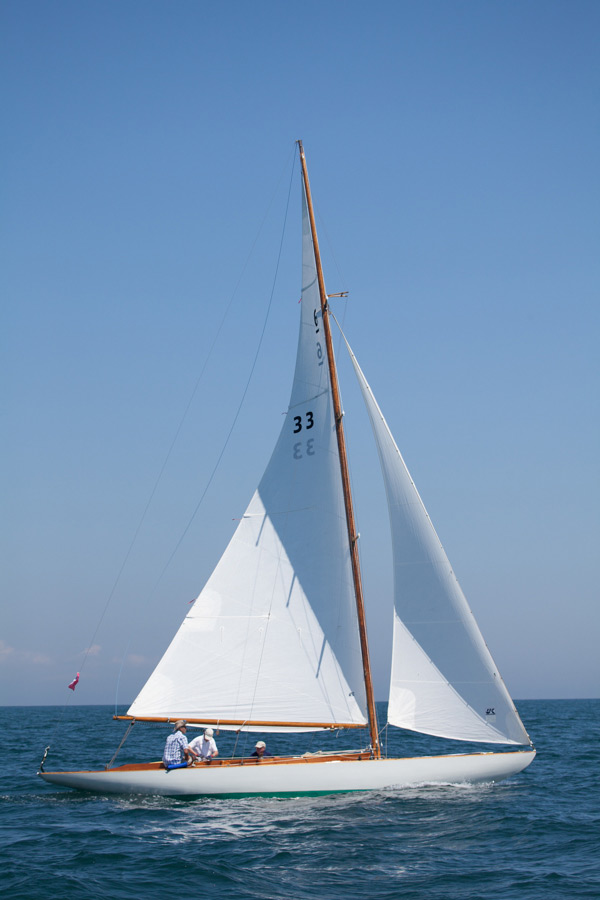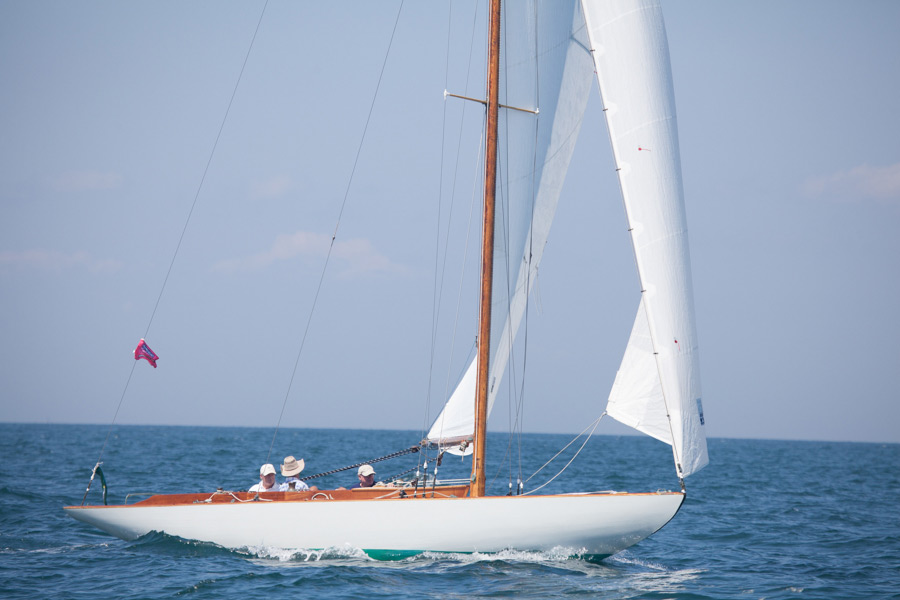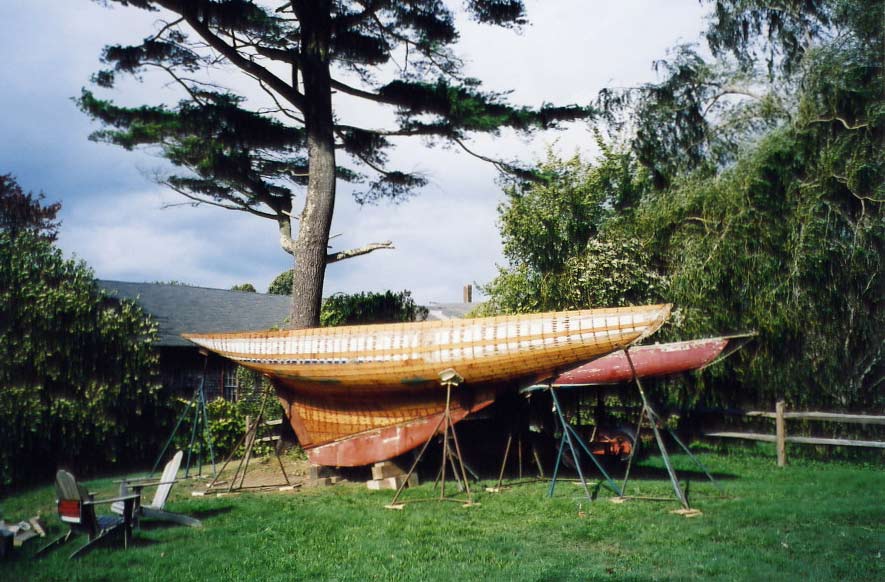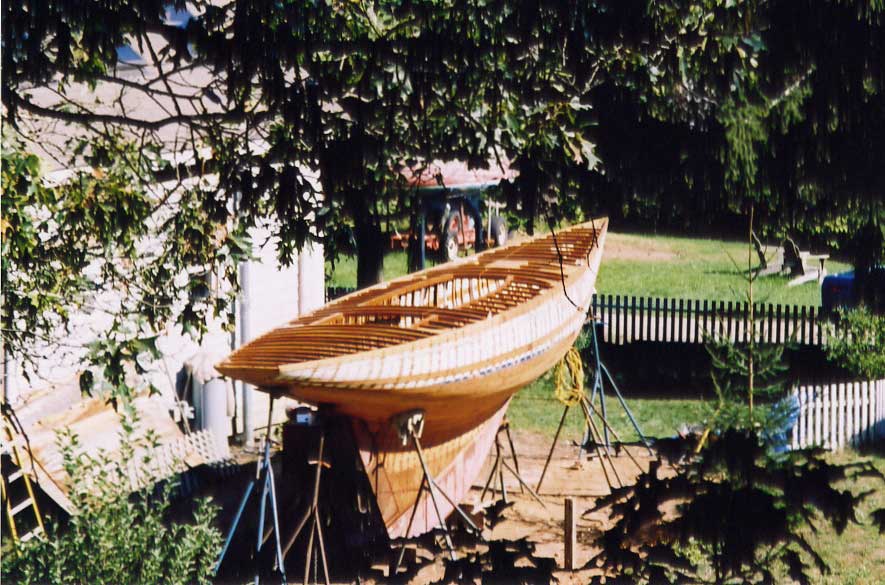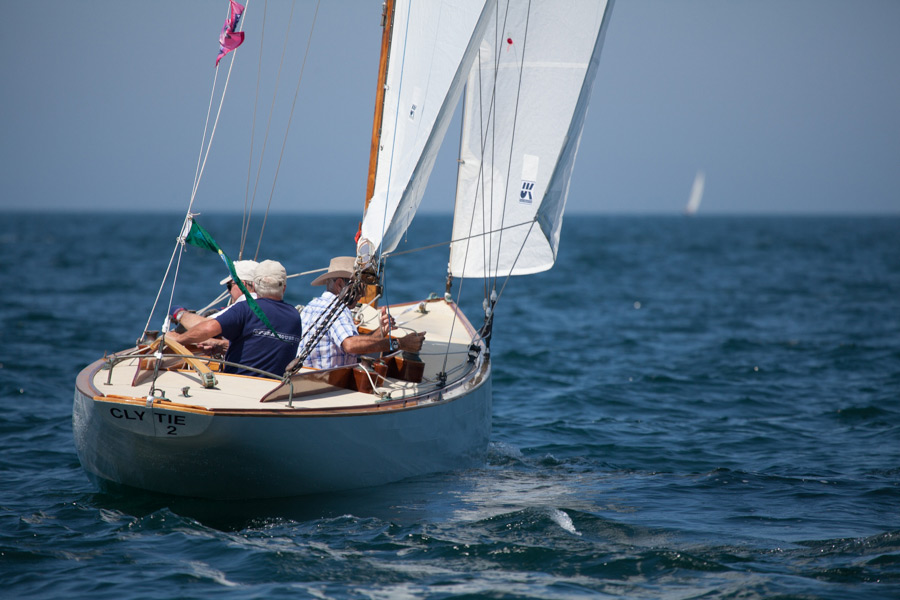
Clytie II was designed for Henry B. Plant for the busy and memorable 1927 season on Long Island Sound. Among the other regular regattas, such as Larchmont Race Week, there were trials to put up a defense of the Seawanhaka International Challenge Cup, as well as a series of defender trials to represent the USA in the Scandinavian Gold Cup, which had been won by Herman Whiton the previous year in Norway with the great US 29 Lanai. Clytie II had joined what was now a seasoned and vibrant group of sixes and fought her way through early season trials in heavy air to be chosen as defender for the Seawanhaka International Challenge Cup. Noted helmsman and raconteur Sherman Hoyt, though he did poorly with his own radical design, Atrocia, was asked to defend with Clytie II. Though quite displeased not to be sailing his own boat, Hoyt accepted and was pitted against the Johan Anker designed N 27 Noreg under the formidable and wily Magnus Konow. Since the trials were sailed in mostly heavy air and terrible weather, logic dictated that the Seawanhaka Cup was a mostly light air series. The records show Hoyt and Clytie II lost the Cup to the Norwegians 2 to 3. The 1927 season on Long Island Sound was transformational to the Class because it was the first time an overlapping "genoa" jib was seen in the USA, introduced by Sven Salen on S 2 May Be in the Scandinavian Gold Cup. Clytie II continued to compete through the late 20's and early 30's, even going to California for the 1928 Los Angeles Mid-Winter races, placing 6th of 9 in this inaugural year of 6 metre participation in the L.A. series for the Ben R. Meyer trophy. In 1932 Clytie II was fitted with a Sparkman & Stephens designed cabin and interior and continued to cruise in New England through the 1990's. The current owners acquired her from the estate of Percy Murnane, who owned and sailed the boat for at least 30 years.
Clytie II was largely rebuilt by Scott Lorraine, with almost all of her frames and much of her planking replaced. She was acquired by Ken Welch and is now sailing out of Mattapoisett, Massachusetts on Buzzard's Bay. She has her original wood mast and and boom and is the picture of what she was in 1927. She qualifies to compete for any Rule 2 trophy and joins the 2 other Crane 6 metre designs in existence, US 43 Sprig, and US 55 Lucie II.

